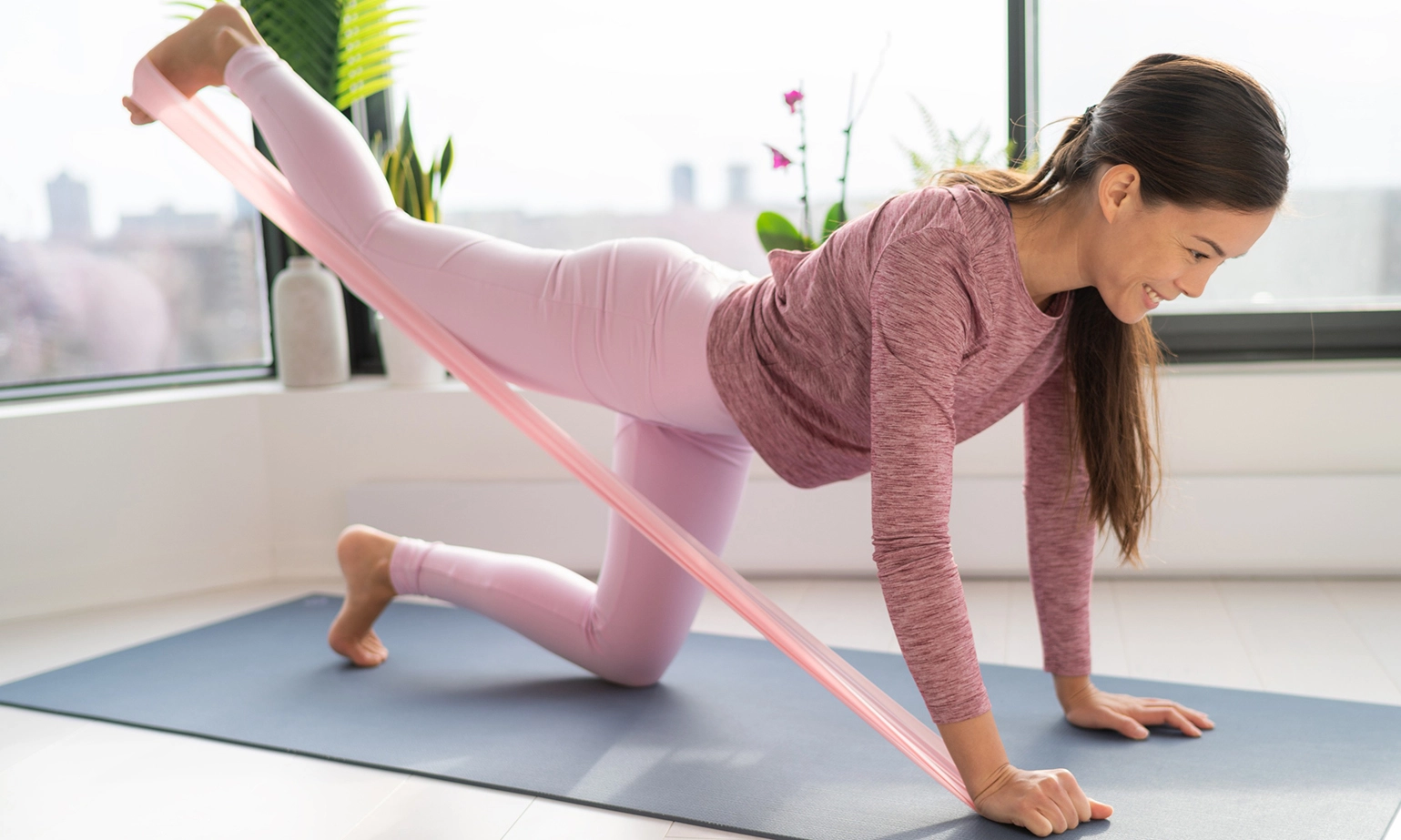How often you should exercise
An expert shares the ideal weekly workout regimen.

KATHMANDU: Regular exercise is part of a healthy lifestyle. But you might be wondering how much exercise you need in a given week to get the most benefits.
According to the American College of Sports Medicine (ACSM), the ideal workout regimen balances cardiovascular work and strength training. Their guidelines recommend 150 minutes of moderate-intensity aerobic physical activity each week or vigorous-intensity aerobic activity for a minimum of 20 minutes three days a week. Additionally, you should do strength training twice a week.
What this means in practice depends on your age. For example, the American Heart Association defines moderate-intensity physical activity as an activity that increases your heart rate to 50% to 70% of its maximum rate, while vigorous physical activity is about 70% to 85% of the maximum rate. But your ideal target heart rate changes as you age. Twenty-year-olds have a higher target (100-170 beats per minute) than 50-year-olds (85-145 beats per minute). That means less-intense exercise can still make a big impact the older you get.
As you age, strength training also becomes more important for bone health. “You lose muscle mass as you get older,” says orthopedic surgeon Anne Marie Chicorelli, DO. “And it’s important to recognize that. People ask me all the time, ‘Well, I walk every day. Isn’t that enough?’ and I will respond, ‘That’s great for your cardiovascular health, but it doesn’t do as much for your strength.’ Strength training, weight training and jogging are impact activities that increase your bone health and decrease your risk for fractures. And make sure to talk to your primary care provider before initiating an exercise program.”
These impact activities also help you improve your balance — specifically, proprioception balance, or “knowing where you are in place in space and time,” says Dr. Chicorelli. “Improving proprioception goes hand-in-hand with strengthening to prevent falls.”
What counts as exercise?
Because working out is about moving your body, many activities count as exercise. “Gardening, dancing, any type of cleaning in your house, mowing the lawn, raking leaves, shoveling your snow — those are all exercise,” says Dr. Chicorelli. “Doing the laundry is also exercise because it’s lifting heavy weights.”
Strength training is also easily incorporated into your daily life. “Resistance bands, cans of corn or soup — anything that you can grip that increases your resistance is helpful,” notes Dr. Chicorelli. “That can be anything from pushing a chair while you’re doing something to lifting your child. If you’re a parent, you can incorporate your child into your activities. Doing sit-ups with your child as a weight — or any exercise where your child serves as resistance — can increase strength and be good for bonding with your child.”
As with movement, you can also build strength training into everyday activities you’re already doing. “If you’re washing the dishes, you can stand on one leg for 30 seconds and then switch off and stand on the other one,” suggests Dr. Chicorelli. “That helps improve your balance. And we know that balance is so important as we get older.”
She adds that flexibility is another important component of exercise. In other words, sign up for that yoga or pilates class. “Yoga incorporates flexibility and stretching,” says Dr. Chicorelli. “As we get older, that’s important to keep our joints supple.”
Luckily, there isn’t much that doesn’t count as exercise. “If you think you’re exerting yourself, or if it feels like exercise — then, yes, you’re probably doing something to raise your heart rate,” says Dr. Chicorelli. “And that still is exercise.”
Making small changes to your daily activities can even count. Perhaps you’re parking a little bit farther away to go to the grocery store or taking the stairs instead of using the elevator. “Those are ways you can incorporate healthy activities into your life without it being labeled as exercise,” she notes. “But they’re still good for your overall health.”
How to put together a workout plan
Working out looks different for everybody and depends on your exercise history. In fact, Dr. Chicorelli says determining the best workout plan involves first establishing a baseline look at your previous physical activity. An exercise plan for someone who maybe took a few months off from the gym will look different from a plan for somebody who’s never worked out regularly.
You also need to take your goals and expectations for the workout plan into consideration. For example, you might be looking to lose weight or gain muscle mass, or increase the distance you can run. “Based on those results, you also need to look at any chronic health problems or other conditions you might have,” says Dr. Chicorelli.
Why is it important to exercise frequently?
Exercising frequently is important because it helps you build up strength, as well as strengthens specific areas of your body, including your bones and heart. “Better cardiovascular health helps lower your blood pressure and decreases inflammation,” says Dr. Chicorelli. “Strengthening your bones also helps with osteoporosis.”
Working out brings cognitive benefits and boosts your brain health, too. “We forget that the brain is a muscle, and that when we’re exercising it’s good for our brain,” Dr. Chicorelli explains. “For example, we know that people that exercise live longer and have less risk of developing dementia.”
How to get the most out of your workout
Sometimes, if you’re having a really busy week, you might only be able to do 10 minutes of exercise a day rather than your normal workouts of 30 minutes a day multiple times a week. That’s perfectly OK, says Dr. Chicorelli — just increase your intensity.
“Researchers have done studies that say it’s sometimes even better if you’re able to do higher-intensity workouts for short periods of time. If you were to jog three times a day for 7 to 10 minutes, you get more overall health benefits from it versus walking for 30 minutes.”
Dr. Chicorelli says she’s a “huge believer” in the FITT principle, which stands for frequency, intensity, time and training. Viewing exercise through this principle can help you optimize your health. In fact, keeping these parameters in mind when you exercise can help guide you to more effective workouts.
Still, you might have questions as to how often you should focus on specific muscle groups, including legs, chest, abs and biceps. “Generally, it’s better to target one muscle group at a time,” advises Dr. Chicorelli. “So each session, you’re supposed to do one major group.”
That’s not a hard-and-fast rule, however. “Be patient and do what you feel comfortable doing,” Dr. Chicorelli adds. “If you’re gardening, you’re going to be working on all your muscle groups. It still exercises.”
No matter what you choose to do, just make sure not to overdo it. “If you do too much, you’re going to get sore and you might get discouraged,” cautions Dr. Chicorelli. “I tell my patients, ‘Be the turtle, not the hare. Slow and steady wins the race. Don’t go too fast into anything.’ Build up a good foundation so you’re less likely to get injured while staying motivated.”
Perception also helps you stay motivated while exercising. Rather than telling yourself, you’re trying to lose weight, you can frame workouts as you’re trying to be healthier.
“I look at exercise as health,” says Dr. Chicorelli. “Exercise can feel like an overwhelming obstacle. If you view it as general health and healthy activities, it’s easier for you to incorporate it into your lifestyle. Exercise often makes you feel like you need to put on a gym shirt or running shoes. Small changes in your daily activities can lead to positive health outcomes.”
And, above all, never discount the power of positive thinking.
“When you say ‘I’m losing weight,’ ‘losing’ is a negative word,” says Dr. Chicorelli. “That’s in contrast with positive statements like, ‘I’m trying to eat healthier or ‘I’m trying to improve my health.’ If you look at these things as a positive, your outlook — and what things you need to do to achieve your goals — are also positive.”
-Health Essentials








